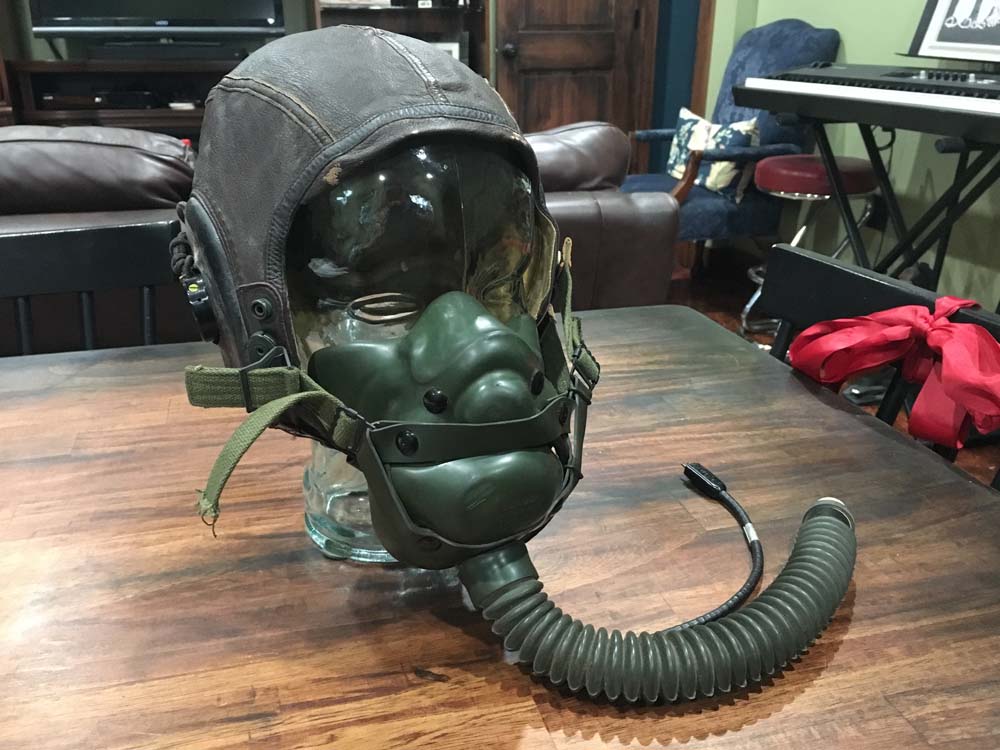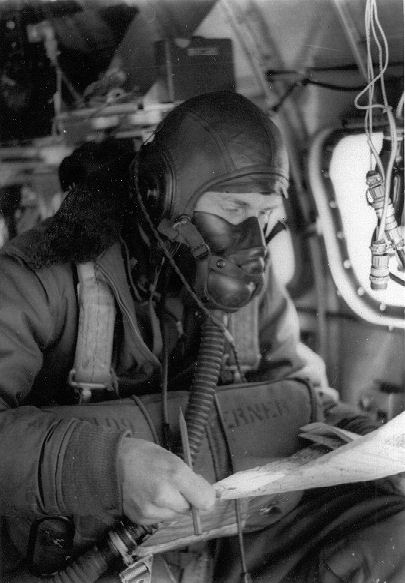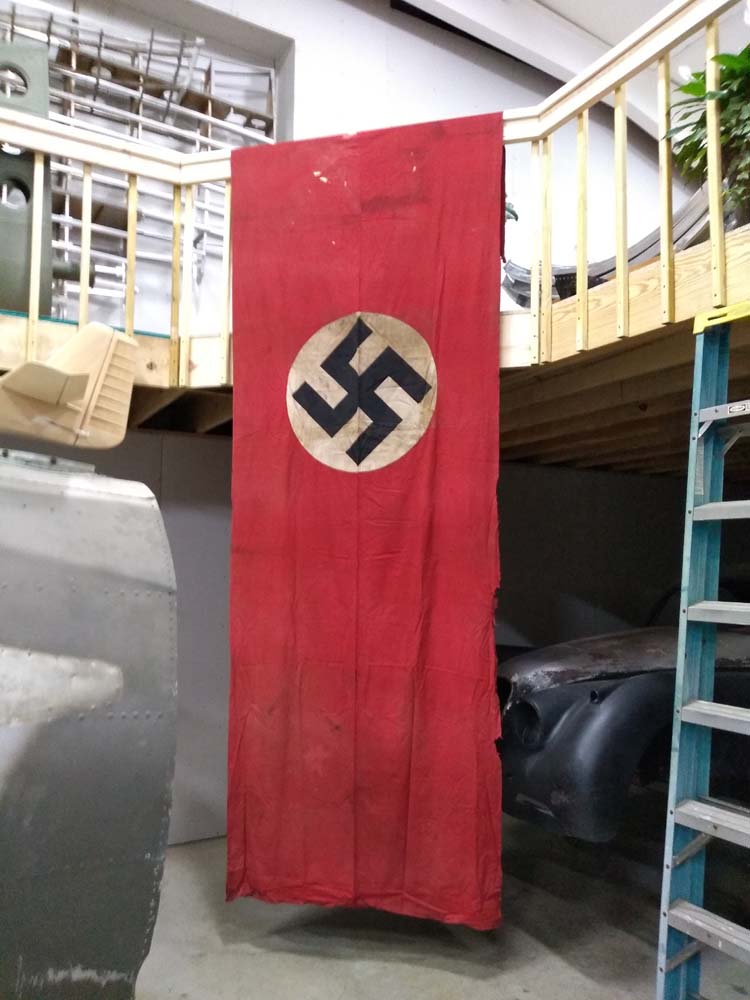
I realize it has been a while since my last post, but with the virus keeping everyone under quarantine, I hope our followers can forgive me for being a little tardy. There have been plenty of Facebook updates throughout this period, but these have all been rather small and probably not big enough to warrant an entire post here – at least, not yet.
However, yesterday saw the donation of the Nazi banner you see above, and we figured everyone would want to know about that…
It is heartwarming when someone brings you a historic piece, asking that you to display it where the world can see. And, while most of the donations we have received involve Lucky Thirteen herself, we have received a few donations that will require displays of their own. And of course, while we are rebuilding the airplane at Hangar 3 of Asheville International Airport – using what free space we have to display our collection – we do intend to eventually build a proper museum later on down the line.
And believe me – between our good friends Christopher Wilkinson and Andy Rivera, we have ideas for a museum that will knock everyone’s socks off!
But for now, when it comes to finances, the airplane comes first.
Still, when it comes to donations, you never know who is going to contact you and you never know what they are going to offer. This one was certainly a shock.
The banner is roughly 13 ft long and comes to us from Asheville local and friend Billy Turpin. A collector of Second World War memorabilia, Billy inherited this banner after the passing of Floyd A. Biddix, Jr. in 2008.
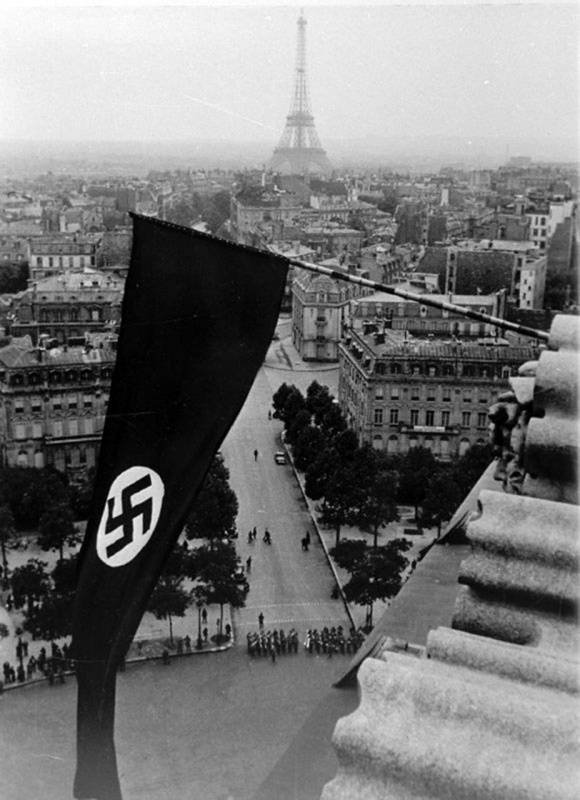
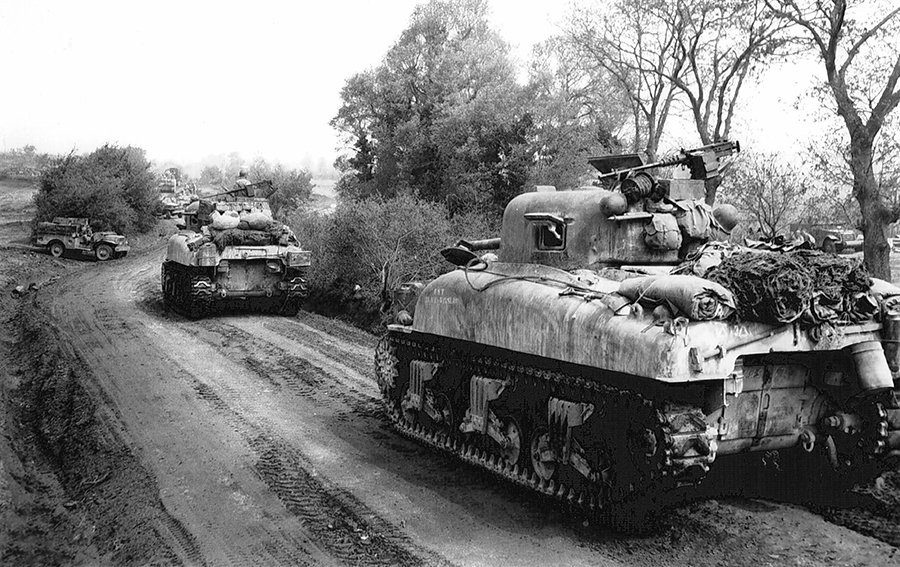
“Bud” Biddix was born in North Carolina on 19 May 1923 and drafted into the US Army on 11 January 1943 at age 19. Biddix was assigned to the First Armored Division (US Fifth Army) and served in the war as a tank commander, receiving a Bronze Star and three Purple Hearts during his deployment. The First Armored Division is most famous for its role in the Anzio breakout and M4 medium tanks of the unit can be seen in the photo above. Biddix passed away in 2008.
Since First Armored spent most of the war in Italy, we presume Biddix liberated these banners after the war, as the division was one of several assigned to the postwar occupation of Germany. First Armored was headquartered at Bad Kreuznach, a region that includes the cities of Schweinfurt and Stuttgart – areas bombed by Lucky Thirteen during her service in 1943.
Biddix supposedly liberated three of these banners during his time overseas, selling/trading the other two over the years. This final banner appears to have seen some use as a tarp, as it is stained in places from catching dripping paint.
But this is not the only donation Billy brought our way…
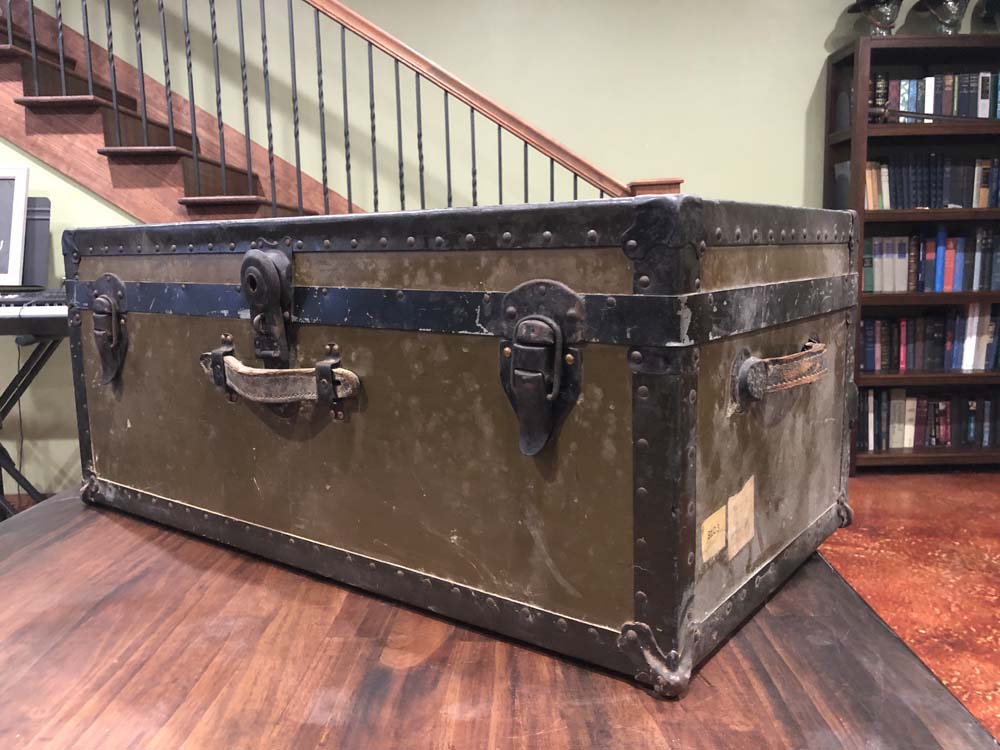
Back in July of last year, Billy donated the footlocker you see above, containing the uniforms and personal effects of William A. Broadway, Jr.
Bill Broadway was born in South Carolina on 29 June 1916 and was drafted into the US Army on 16 May 1942 at the age of 25. Presumably on account of his education – we have his diploma and fraternity badge – Broadway served as a Captain with the US Chemical Warfare Service, attached to the Twentieth Air Force. It is likely that this service was related to the 1945 firebombing campaigns against Japanese cities. Using large quantities of the chemical incendiary napalm, the 20AF bombed burned five Japanese cities throughout 9 March – 18 March, dropping so many incendiaries in such a short amount a time that the campaign had to be halted because they had run out of bombs. Broadway passed away in 1991.
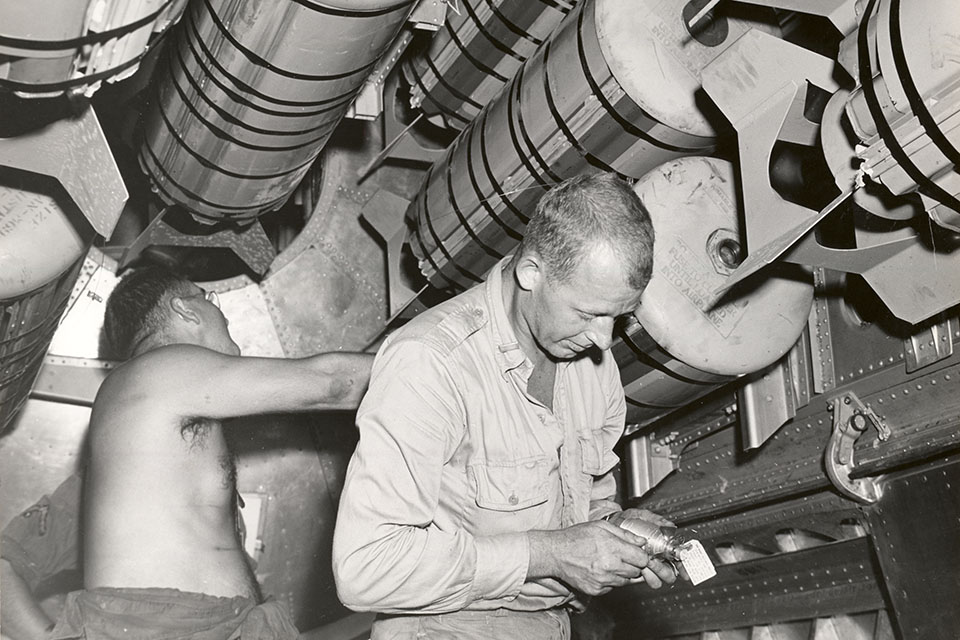
The photo above shows armorers loading AN-M19 incendiary clusters aboard a Boeing B-29. Each cluster contained 38 six lb incendiary sticks. Upon dropping, the bands on the cluster would release and the napalm sticks would spread out and descend on tiny individual streamers. Since CG XXI BC (20AF) MG Curtis E. LeMay had ordered his crews bomb at low-level in B-29s stripped of armament, each bomber was able to carry some 14,000 lbs of incendiary bombs.
Broadway’s footlocker included both his summer and winter dress uniforms, sewing kit, sidearm ammo pouch, leggings, musette bag, and a snake bite suction kit. Also included were an unmarked bottle, his high school diploma, and mementos from his fraternity: Sigma Phi Epsilon.
Broadway’s uniform carries a Meritorious Unit Commendation and bars indicating 12 months of overseas service.
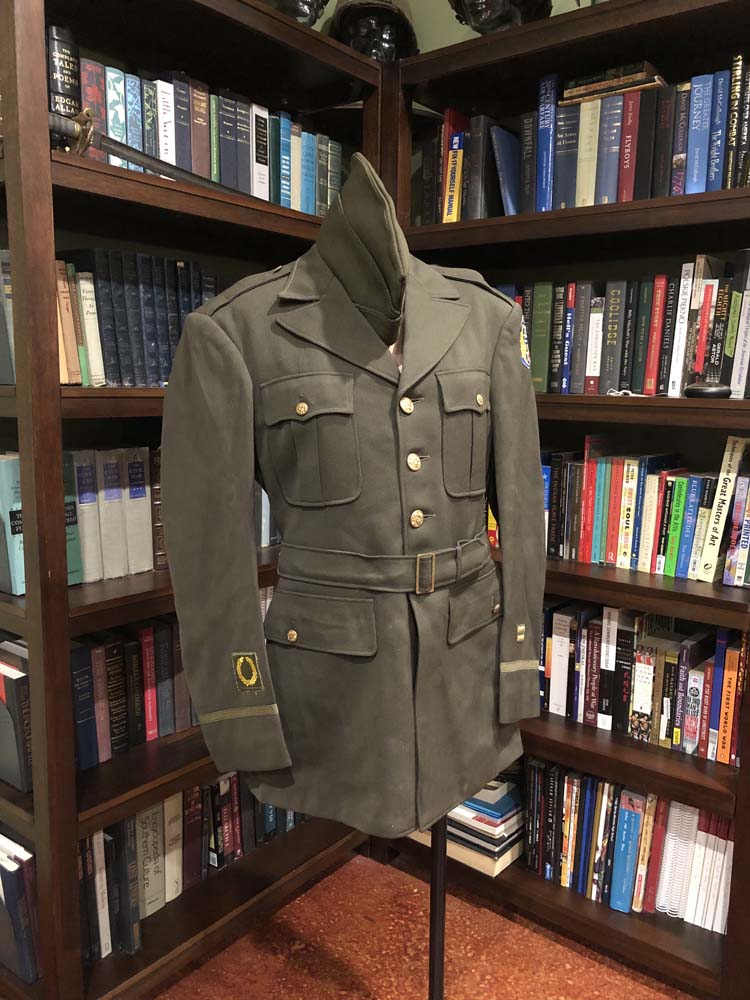

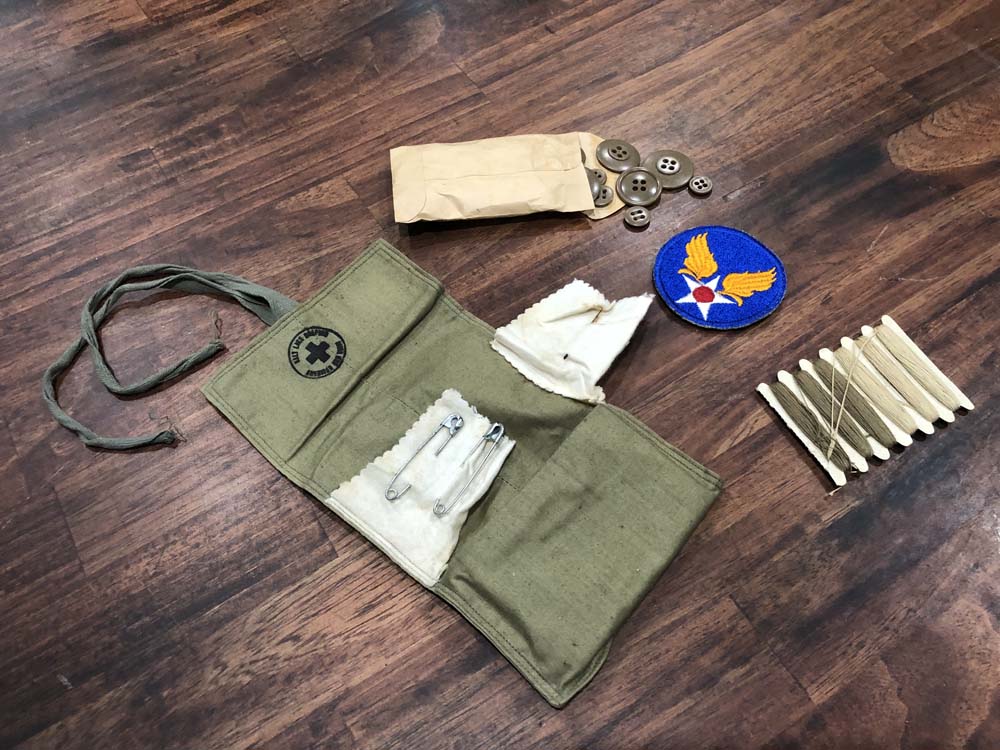

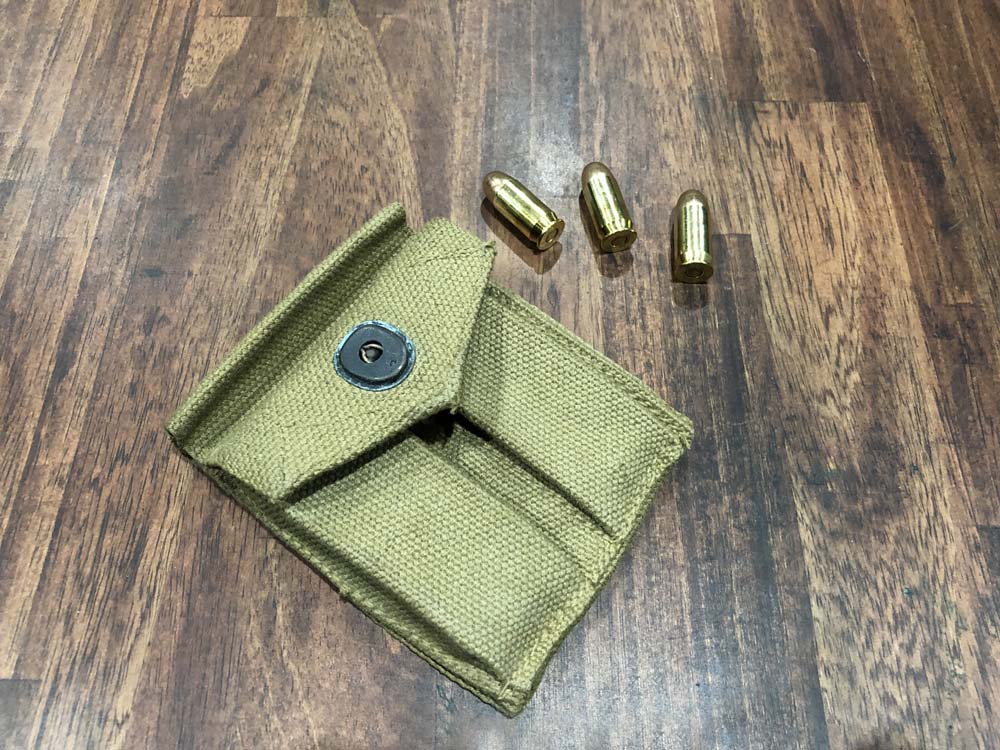

The ammo pouch is more significant than it might at first appear:
The V Amphibious Corps (US Fifth Fleet) declared the Marianas secure on 10 August 1944 and the first elements of the 20AF arrived on 12 October. However, despite the hard fighting that had been required to take the islands, US forces estimated that some 7,500 Japanese servicemen remained at large. Evidence bore this out. Throughout the rest of the war, guerrilla attacks against US airbases were a regular occurrence and airmen were instructed to carry a sidearm at all times.
The photo above is a good example of this, showing CG XXI BC (20AF) MG Curtis E. LeMay (center) conferring chief-of-staff BG Lauris Norstad (left), and CG 314BW BG Tommy S. Power (right). Note how Power is carrying a Colt M1911 on his chest.
The last Japanese holdout in the Marianas, Gunsō Shōichi Yokoi, was located and captured on Guam on 24 January 1972 – less than 30 miles from Andersen Air Force Base.
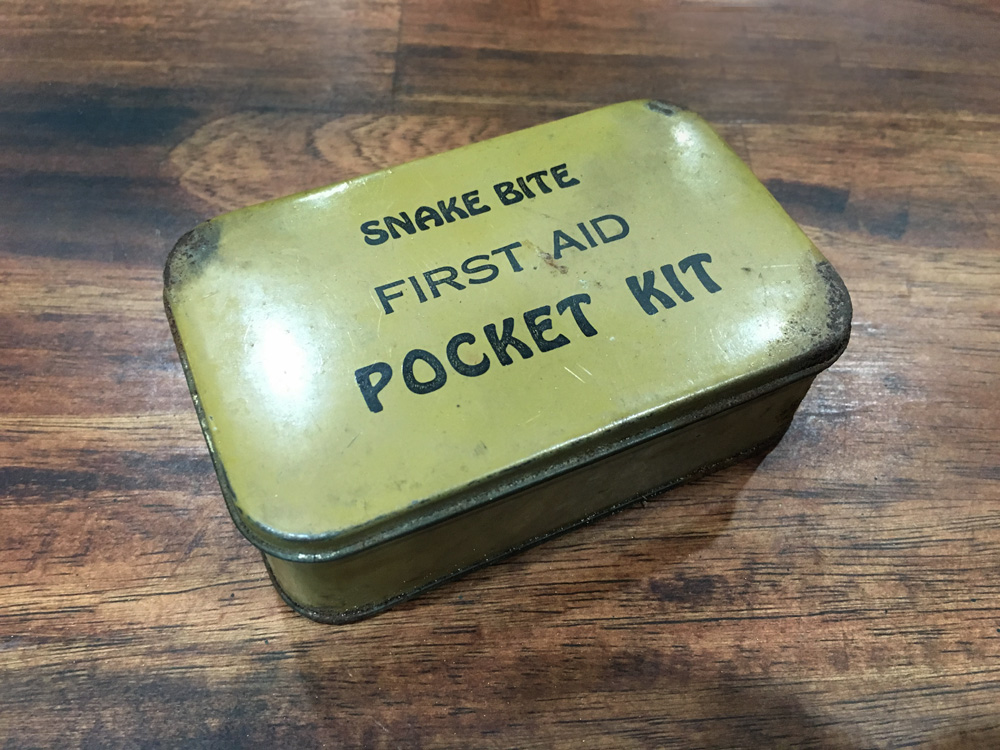
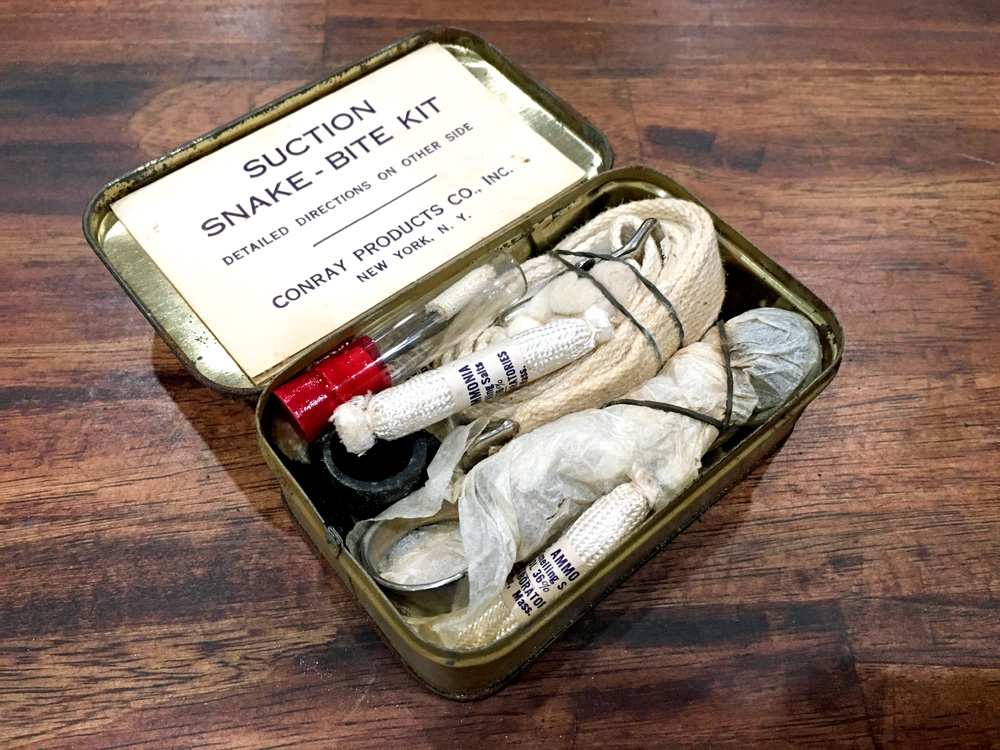
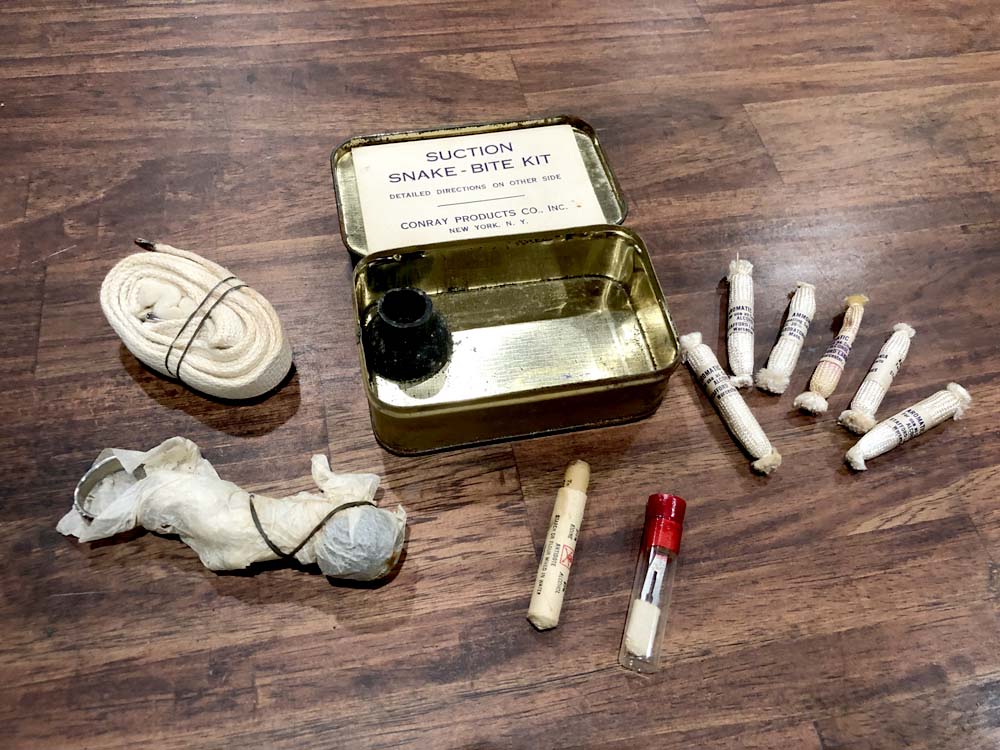
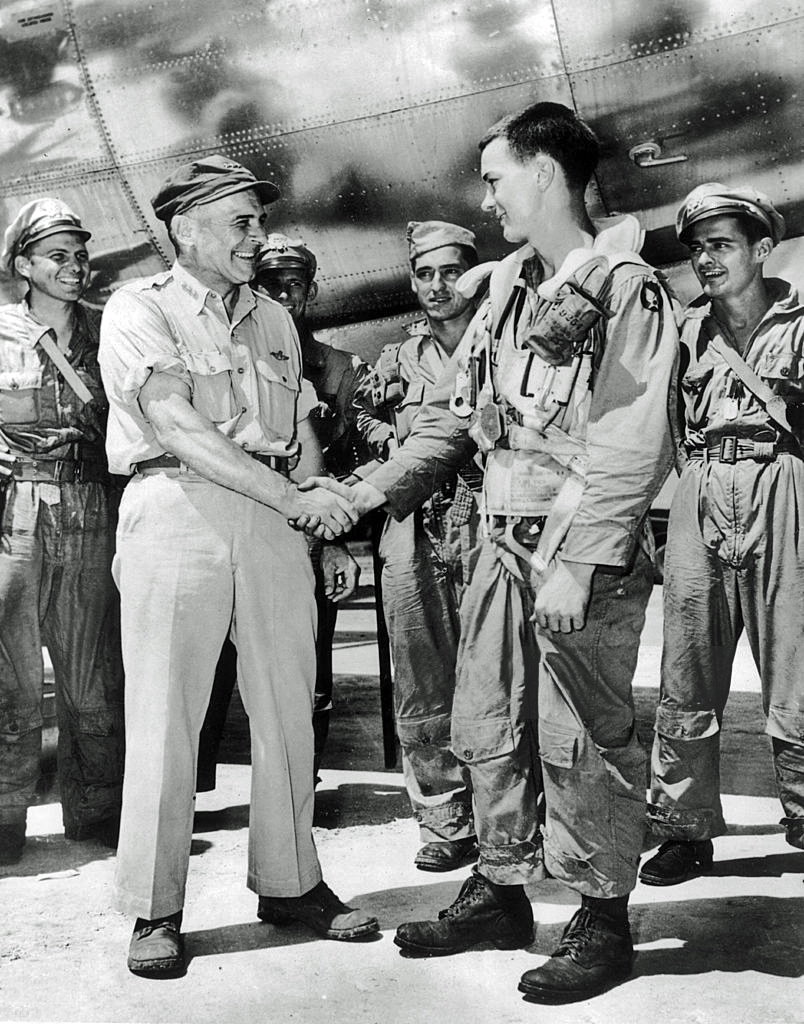
This suction kit is also a piece with a unique history.
US forces encountered a menagerie of strange and exotic creatures throughout island-hopping campaigns of the Pacific Theater. The most legendary of these are the pit vipers of Okinawa – also known as habu.
While most people tend to overstate the danger posed by snakes, this is certainly not the case with the habu. The largest of the pit vipers, habu can grow up to 8 ft long and are renowned for entering homes in search of rodents. Naturally, this gives the habu an astonishing bite-rate of 2 per every 1,000 people on Okinawa. Extremely venomous, habu bites can cause paralysis and death and their venom is often used to make a local liquor called awamori.
This suction kit was made by Conray Products of New York. Click here to read the kit’s First Aid Instructions.
On multiple occasions, mongoose have been released on the island to help control the habu population, and I have personally spoken to B-29 airmen who found these creatures on their aircraft. Okinawa was secured by the US Tenth Army on 22 July 1945 with the intention of setting up bases for the US Eighth Air Force from England. The first B-29s of the 8AF arrived on Okinawa on 8 August 1945 – two days after the dropping of the first atomic bomb.
The photo above shows CG 8AF LTG Jimmy H. Doolittle welcoming SSGT Olav J. Loren to Okinawa with the happy news that the war is finally over.
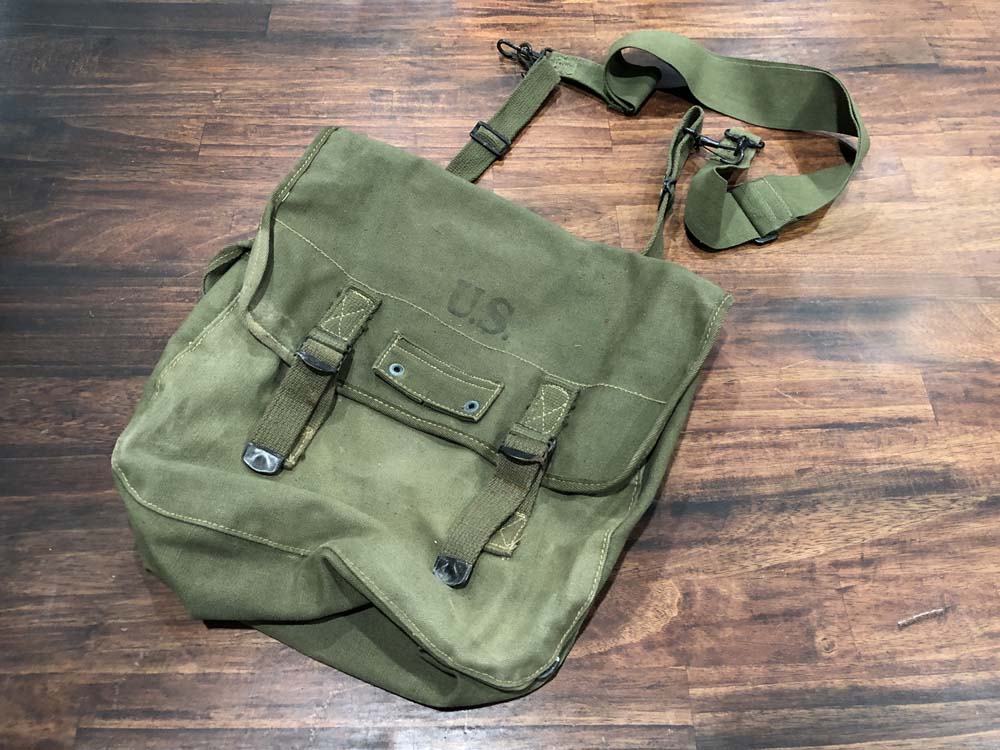
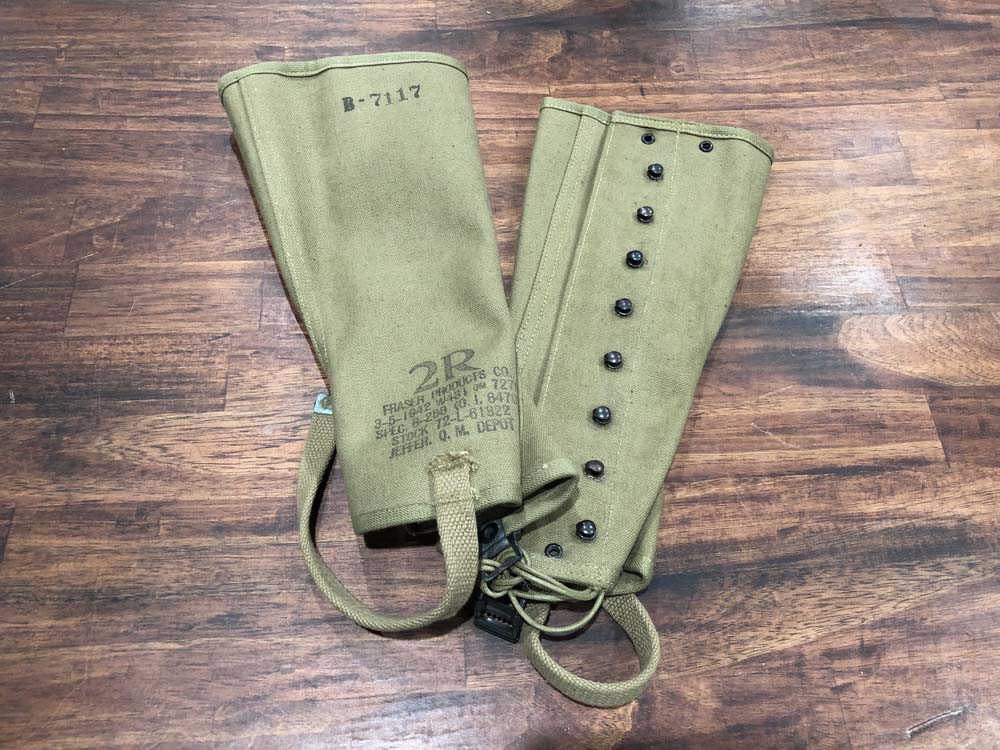
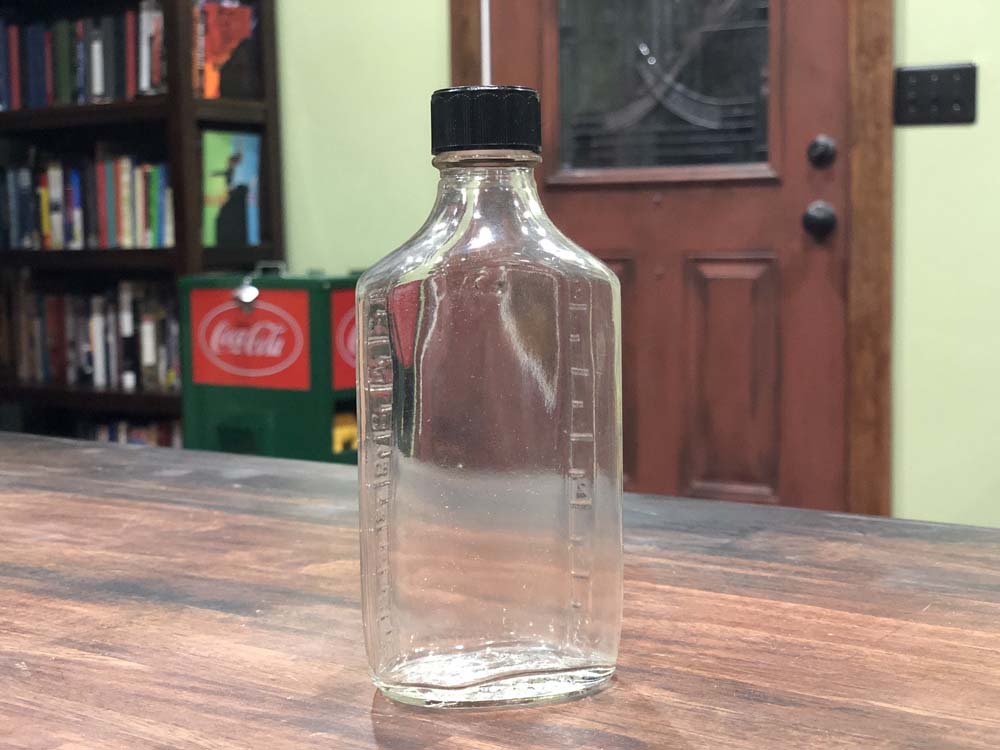
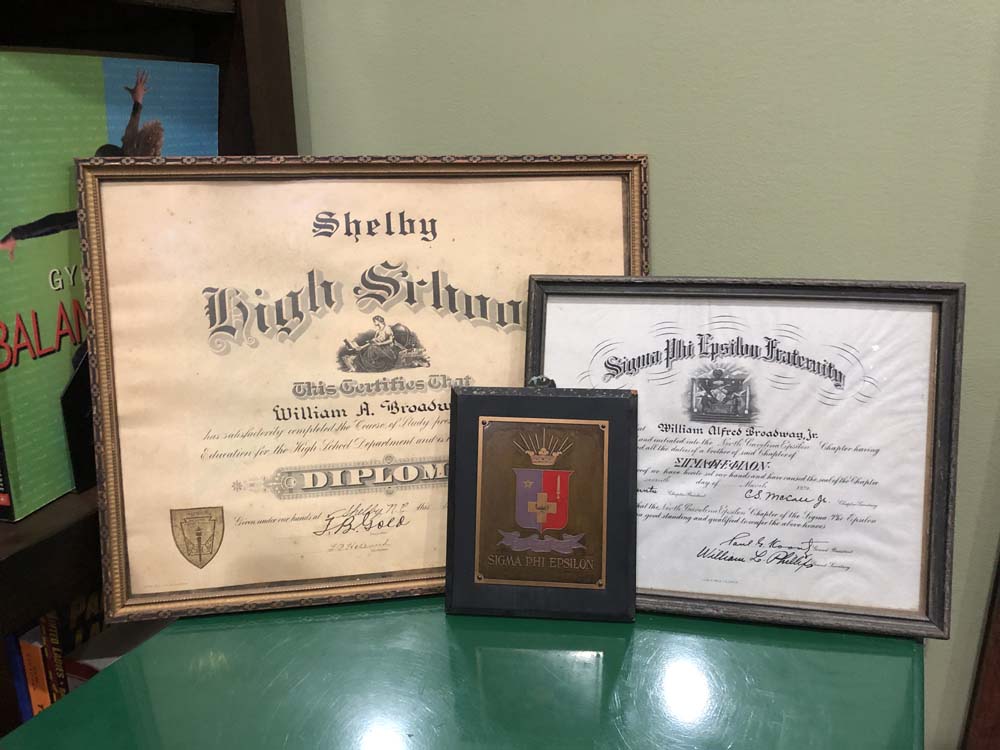
These next pieces come to us from Doug Knauer and originally belonged to his father-in-law, Paul Bienz.
Paul W. Beinz was born in Indiana on 21 March 1926 and drafted into the US Army on 22 June 1944 at the age of 18. Unfortunately, we do not know much about Beinz’s time in the service. Like Broadway, it is clear that at some point he was commissioned an officer and transferred to the Army Air Forces (an all-volunteer branch), but we have no details on them personally or which units they served with. Doug’s donation included Beinz’s logbook, but it is mostly empty except for a few training flights in 1945. We contacted the Genealogy Center in Fort Wayne, Indiana for any information on Bienz and were told his records focused on his postwar athletic career, only mentioning a brief “stint” in the Air Force. Beinz passed away in 1994.
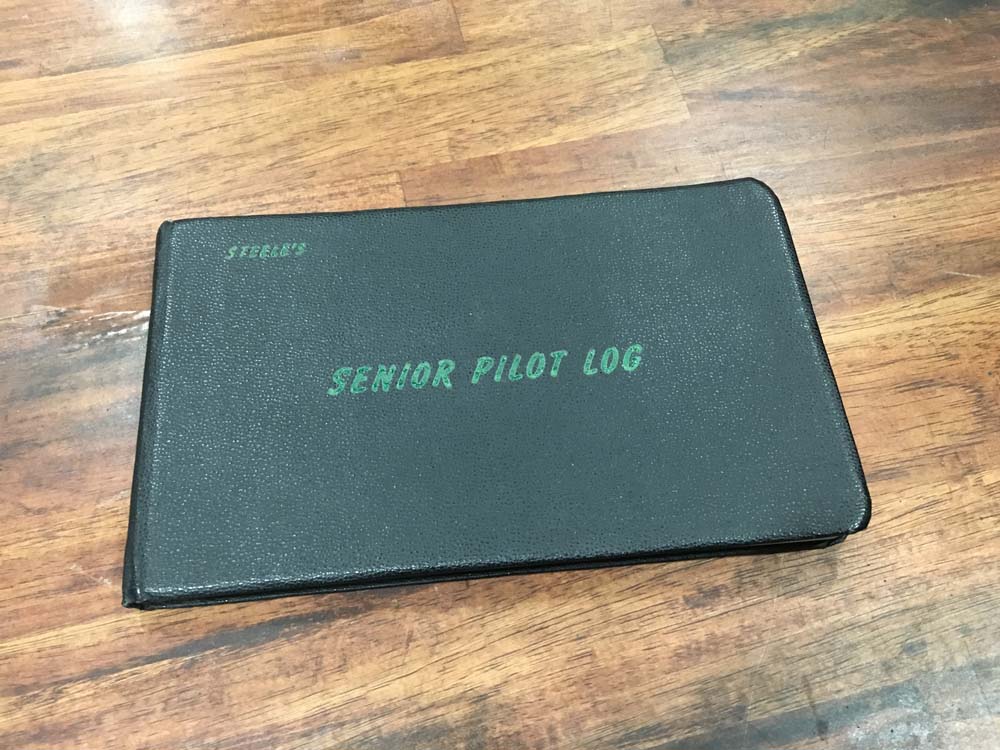
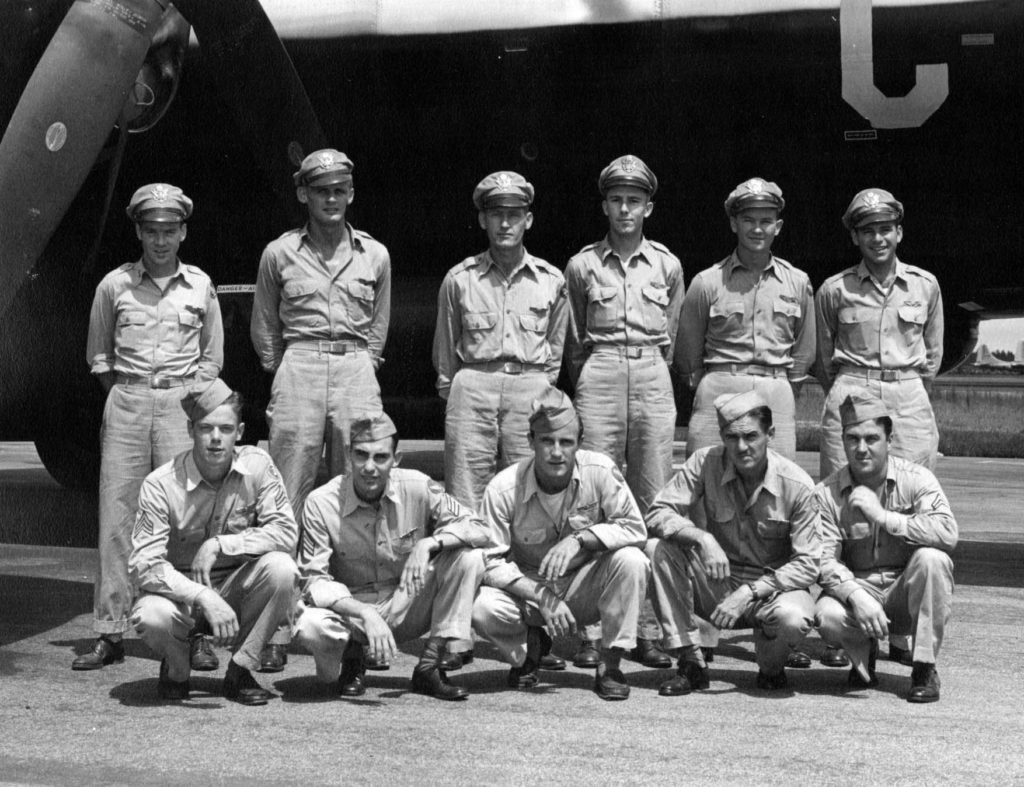
Beinz can be seen in the photo above kneeling in the center of the front row.
Still, Doug’s donation included pristine examples of Beinz’s A-11 flight helmet and A-14 oxygen mask. The A-11 helmet, combined with the A-14 oxygen mask, was the most commonly used headgear for American airmen in the Second World War, entering service on 1 July 1943. The ultimate in a series of experimental wrap-around masks, the A-14 definitively replaced the small A-8 oxygen mask (identifiable by its rebreather bag). The constant-flow design of the A-8, with its small fittings, had a frightening tendency to clog with frozen saliva, which could lead to fatal oxygen deprivation. As such, the obvious solution was a demand-flow oxygen system based on a wrap-around mask. It took some time for the US to develop an efficient wrap-around mask as, while many nations used canvas masks, oxygen wastage was always an issue. The A-14 was so radically successful that it served as the basis for all future US oxygen mask designs and remained in service up until 1954.
Both the mask and the helmet include their original wiring – a Shure ANB-M-C1 microphone in the nose of the mask and a pair of ANB-H-1 receivers in the helmet. We may have to hook this equipment up to Lucky Thirteen‘s intercom system once its on display…
